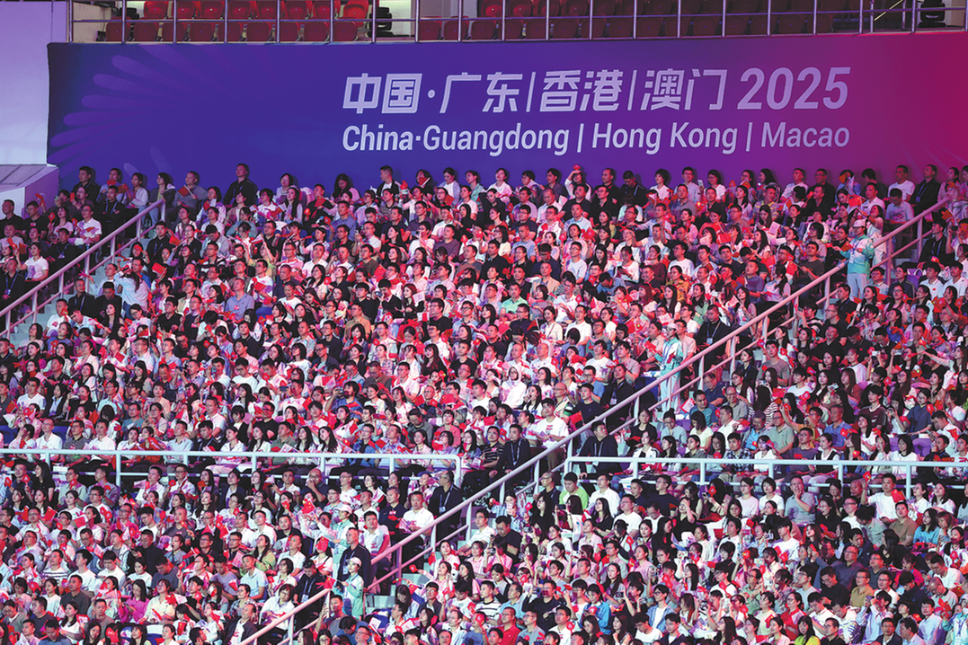M&A portfolio begins to change color

Consumer industries becoming a more attractive target overseas for Chinese companies
Chinese companies increasingly flexing their muscles on the international stage is nothing new; what is new is that they are growing fond of consumption-related targets.
China's outbound direct investment, excluding investment in the financial sector, amounted to $90.17 billion last year, rising 16.8 percent year-on-year, the Ministry of Commerce says. Of that, $46 billion, an increase of 8 percent year-on-year, was spent on mergers and acquisitions of overseas companies.
Studying overseas M&As over the past few years, it has become clear that Chinese buyers are shifting from production-related deals to consumption-related ones, echoing China's gradual shift from a manufacturer to a consumer.
The changing preference in deal making is reflected by the fact that Chinese companies' shopping portfolios are quickly diversifying, with the energy sector accounting for less in overall investment.
In 2012 only $13.54 billion was spent on M&As in the sector, down 6.1 percent year-on-year. The deals accounted for 15.4 percent of the value of all M&A deals, making energy the second-most favored sector by Chinese buyers. It was the first time that energy had lost its top position on the shopping list.
Last year, energy, accounting for $37.1 billion of deals, bounced back to become the most favored sector, but this was mainly thanks to a mega deal, CNOOC's acquisition of Nexen Inc, valued at $15.1 billion.
Generally, the energy sector's dominance on Chinese companies' shopping lists has been decreasing since 2010, with other sectors such as finance and leasing and commercial services catching up quickly. Before 2010, energy deals often accounted for 70 percent of all overseas deals. The proportion has been less than half in recent years.
The change came after China's growth in demand for energy waned after its strong export boom ended and its industrial overcapacity piled up. Overvaluation in previous energy deals also prompted Chinese buyers to behave more cautiously in seeking new deals. In addition, the present government's push for state companies to make deals overseas seems less forceful than that of its predecessor. As energy deals are mostly done by state companies, the change of government stance is also likely to add to these companies' prudence.
But in a broad sense, the fall in the value of energy deals in overall overseas transactions reflects China's reduced focus on manufacturing.
Even within the energy sector, a change is happening. Oil and gas deals have zoomed past metal and mineral deals to dominate. Since oil and gas are more related to general consumption while metals and minerals are more related to manufacturing and production, this change is new proof that Chinese companies are buying for consumption at home.
Apart from energy, two new sectors have risen quickly on the shopping list, confirming that Chinese buyers favor consumption-related foreign targets.
The first is retail and wholesale. In 2012, Chinese companies spent $13 billion, or 14.8 percent of the overall M&A money, in the sector, making it the third-most attractive sector that year. Most of these deals were in developed economies such as the United States and the European Union, as buyers were keen to acquire local medium- to high-end consumer brands.
These deals were made to cater for the rising Chinese consumption of high-end products. Last year the value of Chinese consumption of luxury goods exceeded $100 billion, making the country the world's largest luxury consumer. As US and EU brands are facing a shortage of capital for growth amid their saturated markets, Chinese companies are more than willing to buy these recognized upmarket brands to cater to growing Chinese demand.
The other sector that is attracting Chinese investors is food. Meat producer Shuanghui International Holdings' acquisition of Smithfield Foods Inc in the US last year was typical of such deals. The deal was worth $7.1 billion, making it the second-largest Chinese overseas acquisition last year. Chinese dairy companies' acquisition of foreign peers in recent years has also underpinned the trend. Scarce natural resources in per capita terms and rising public awareness of food safety will prompt Chinese food companies to seek overseas deals to meet rising Chinese demand.
The trend of Chinese M&As of overseas companies focusing more on consumer industries than resources has become clearer during the first three months of this year.
Major deals disclosed this year have included only one involving mineral resources, with others related to finance, auto, IT and retail sectors.
Most of these purchases are supposed to bring buyers state-of-the-art technologies and brands to ultimately tap rising consumer demand in China.
For example, Lenovo's purchases of IBM's server business and Motorola Mobility show the Chinese IT giant wants to repeat its success in increasing its market share in China by drawing on the influence of a global brand, as it did with Thinkpad notebooks.
Sanpower Group, a conglomerate in Jiangsu province, has signed a deal to buy the 165-year-old British chain of department stores House of Fraser. The deal is apparently to cater for the need of Chinese consumers who are hungry for House of Fraser's offering of affordable luxury alongside the world's most upmarket fashion brands.
Sanpower's chairman, Yuan Yafei, sums up the deal's aim: "We can bring the House of Fraser to the whole of China."
The authors are analysts at Shanghai-based Universal Consultancy. The views do not necessarily reflect those of China Daily.
(China Daily Africa Weekly 04/11/2014 page13)
Today's Top News
- China warns Japan against interference
- Nation's euro bond sale shows investors' confidence
- No soft landing for Tokyo's hard line
- Commerce minister urges US to increase areas of cooperation
- Strong demand for China's sovereign bonds signals global confidence
- Ministry urges Japan to 'maintain self-respect'






























